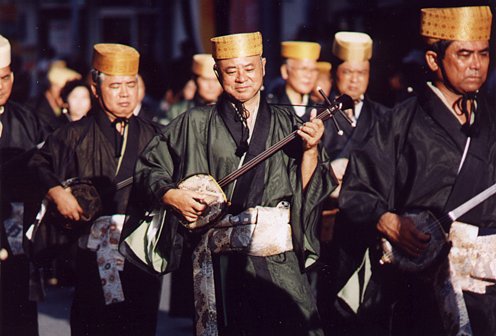Japan

After living in Japan for 3 years, I realized that the more photographs I took, the less I seemed
to capture the essence of the country. It's easy after spending a few days in a foreign land to
share your pictures and impressions with somebody; it's substantially more difficult to live
somewhere for several years and then try to convey to an outsider what the experience was like.
For a more in-depth look at Tottori, the rural prefecture where I lived and taught English, click
here. The photos below focus more on
my travels throughout Japan rather than the area where I lived. Over the course of 3 years I
crisscrossed the country from the frost of the northern island of Hokkaido to the
steaming beaches at the bottom of the Ryukyu Island chain. The few snapshots below offer only the
briefest of glimpses...
---------------------------------------
Visitors to Japan always marvel at the prevalence of English that doesn't quite seem right.

---------------------------------------
A Japanese proverb says that you are brave to climb Mt. Fuji once, a fool to do so twice. Once
was certainly enough for me, and I was sore for days afterwards. After an all-night bus ride from Tottori to Mt. Fuji, I woke just after
sunrise to see this splendid view of the mountain we would soon conquer. Everyone else in the
bus was still asleep (except the driver, thankfully), so I had this incredible view all to myself.
In silence I contemplated the hike to come. At 12,388 feet (3776 m),
Mt. Fuji is the tallest mountain in the country and even in July, when we went, sprinkles of
snow can still be found at the summit.
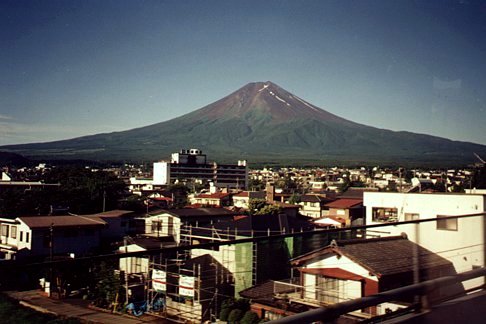
---------------------------------------
Flying into Nagano for the 1998 Winter Olympics, I thought Mt. Fuji looked far more formidable.
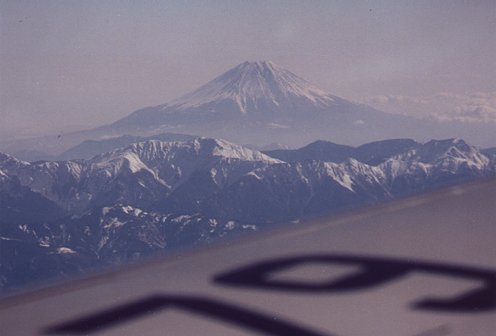
---------------------------------------
Taking a break from the Olympics to journey farther inland to famous Matsumoto Castle, one of
many feudal castles that still dot the Japanese countryside today. Its striking black color
makes it one of the most beautiful.
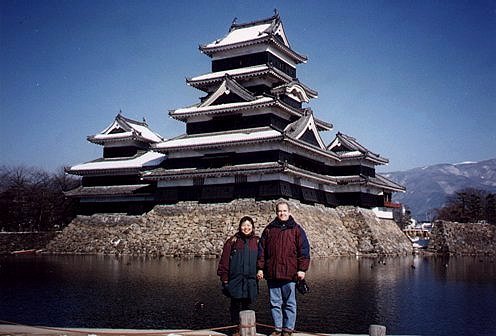
---------------------------------------
Inside a Sapporo McDonald's, seeking warmth from the subzero temperatures outside at the city's
world-famous snow & ice festival ("free heat" as more than one foreigner was heard to exclaim).
The people of Japan are undoubtedly the most camera-friendly in the world.
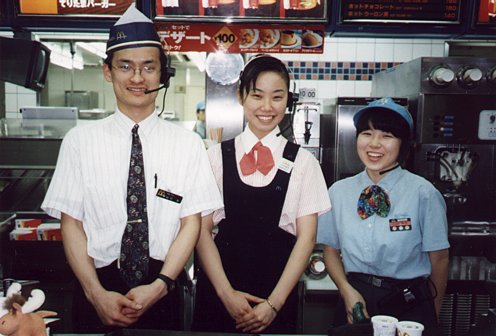
---------------------------------------
Traditional Japanese food at its finest,
the presentation of which is always just as important as the mixture of tastes.
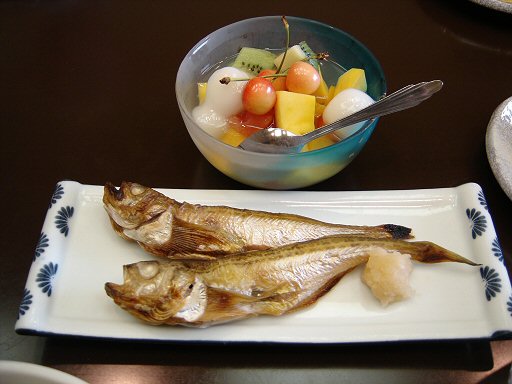
---------------------------------------
Living in Japan was my first experience dealing with freezing weather. The Japan Sea coast,
where I lived, is devoid of big population centers precisely because it has some of the nastiest
weather in the country. Because snow was something new to me, I used most of my film during
the winter months of the year. I love the shot below because it is so foreboding and, sitting in
the warmth of home in Hawaii as I type this, I can scarcely believe that I once actually lived
in such a place. Yet I did. This particular blizzard affected me personally, as I was
snowed in and had no way of escaping for winter break since all transportation in and out of
the area was cut off. Needless to say, I missed my flight to Guam.
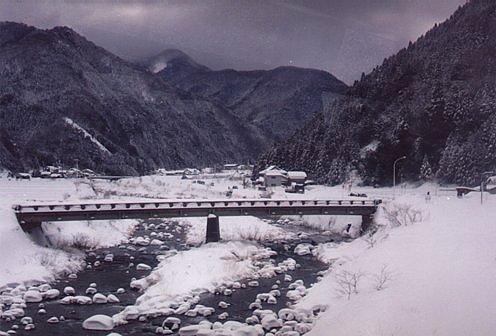
---------------------------------------
Japan stretches an enormous distance from north to south, which means a variety of climates can
be encountered throughout the year depending on which area of the country one travels. I love
the shot below -- taken in the far north of the country -- precisely because it looks like
a misty winter shot when it was, in fact, taken in the middle of July.
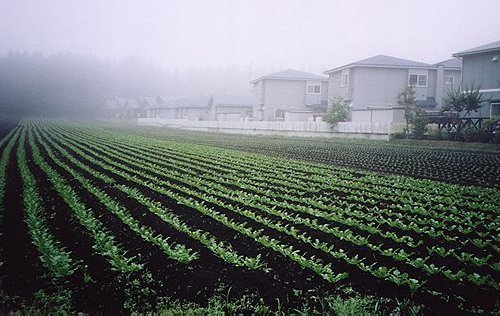
---------------------------------------
Kyoto's Kinkakuji -- the glittering Temple of the Golden Pavilion -- is breathtaking after a snow. Famed
Japanese author Yukio Mishima wrote a novel about a monk assigned to
this temple who eventually went mad because its beauty came to possess his soul. There is
certainly no denying that Kinkakuji is one of the most mesmerizing locales in all of Japan.
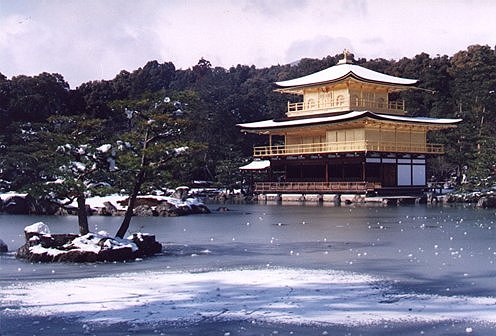
---------------------------------------
Japan's cities boast the best of both worlds -- structures from bygone centuries coupled with the most modern and futuristic profiles. Here is a view of Kobe's signature port skyline.

---------------------------------------
From the stands at a Hanshin Tigers baseball game. For the seventh inning stretch, fans
blow up balloons, pinch the nozzle with their fingers, and eagerly wait for their cue.
Then simultaneously everyone lets go, and thousands of balloons are sent streaking through the
sky in all directions. Just one of the countless things that defies explanation in this
country. The players patiently stand at their positions on the field while cleaning crews
get rid of the subsequent mess.

---------------------------------------
A haunting memorial in Hiroshima. This building lies directly under where the atom bomb detonated
over the city in 1945, its skeleton somehow surviving the explosion that completely leveled everything else
in all directions. It has been left as is since that fateful day and is now part of a vast
peace park and museum complex. Illuminated at night, it gives off a particularly sinister glow.

---------------------------------------
Summer is festival time in Japan, and one of the largest in the country occurs during
the first week of August in Aomori. The famed Nebuta Festival is spread out over several nights of
parades featuring giant floats pushed through the city center to the wild accompaniment of taiko
drums and dancing revelers.

---------------------------------------
My fascination with Siberian winters did not mean I actually enjoyed them at all times, and
on occasion I found it necessary to escape the confines of my arctic environment to seek warmth
elsewhere. Okinawa became one of my favorite refuges as the only area of Japan with a subtropical
climate. The shot below was taken in Naha, Okinawa's capital city, during the island's principal
annual festival. Here a group of musicians play the shamisen,
a traditional stringed instrument
of Okinawa.
